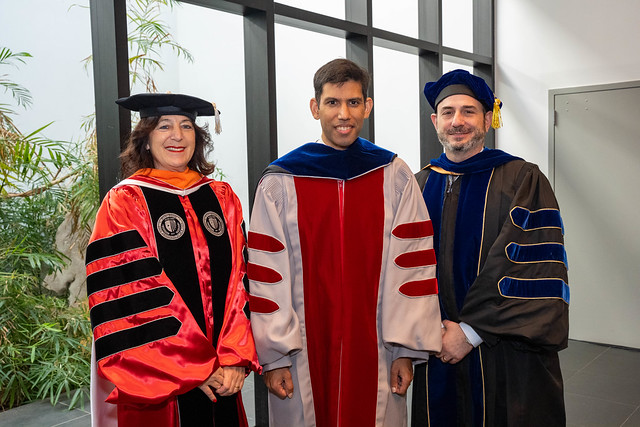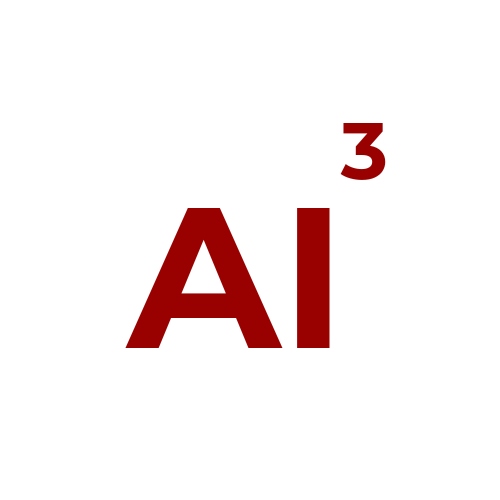Stony Brook, NY, November 21, 2025 — In the beginning of Fall 2025, Lav R. Varshney joined Stony Brook University as Director of the AI Innovation Institute.
Lav comes to Stony Brook from the University of Illinois Urbana-Champaign, where he was a faculty member in the Department of Electrical and Computer Engineering. He also held affiliations in computer science, neuroscience, industrial and enterprise systems engineering, digital agriculture, and personalized nutrition, as well as the Institute of Government and Public Affairs.
Recently, Lav spoke with us about his discoveries on campus, as well as his vision and mission for the AI Innovation Institute, highlighting Stony Brook's role as a catalyst for discovery, dialogue, and action in AI across campus, New York State, and beyond.
AI Innovation Institute: How have your first few months at Stony Brook been? Any revelations from your conversations with the AI faculty, students, and administrators?
Lav Varshney: Although I knew coming in how strong Stony Brook is in disciplines across campus, it has been awesome to witness it firsthand. Whether considering surgery, political science, civil engineering, music, literature, materials science, and all kinds of fields in between, there are so many amazing discoveries happening where there is a strong disciplinary core and the possibility of using AI to advance things even further.
AI3: What is your vision for the institute moving forward?
LV: I think of the research mission of the AI Innovation Institute as T-shaped, such that there is a strong focus on the core of AI in advancing novel algorithms, architectures, and mathematical/physical foundations, as well as a strong focus on the diffusion of AI across nearly every industrial, societal, and scholarly sector. Moreover, there is a strong educational mission, in collaboration with departments, schools, and colleges across campus. Further, we also plan to provide AI resources to researchers across campus, and participate in public discourse and thought leadership.
AI3: There is great potential for synergy, given your background in industry, academia, government, think tanks, and national laboratories. Would you shed light on how your experience and expertise will guide the institute toward its vision?
LV: I’ve been lucky to have worked in various sectors throughout my career, and see them not only individually but also the connections holding them together. Making the most of AI is a whole-of-society effort, and I hope Stony Brook can build partnerships across all these sectors.
AI3: What is the research path you are conceptualizing for AI3? Which interests are likely to advance?
LV: AI3 is a collection of faculty members, students, and staff with their own specializations, and so we’d like to have them pursue those interests. By bringing people together into larger efforts, however, we are aiming for what science policy scholars call Jeffersonian science, where curiosity brings about the best in researchers and mission brings the best results for society.
AI3: Stony Brook is a core partner in Empire AI, New York State’s $400 million investment in AI computing infrastructure. There is also a possibility of further collaborations with industry, and exploration of new research areas.
LV: Yes, the state investment in Empire AI provides some solid computational resources that I hope AI3 members can use to advance their research. The Alpha allocation is already being used by colleagues across the university and the Beta allocation will be announced soon.
AI3: You have also been appointed the inaugural Della Pietra Infinity chair, a prestigious endowed position awarded to faculty whose teaching and research have markedly advanced their fields of study.
LV: I am very grateful to the Della Pietra families for providing an endowment to support my activities going forward. I hope to live up to their hopes in driving AI on campus and around the world.

AI3: Carl W. Lejuez, Executive Vice President and Provost, said the AI Institute will “[catalyze] core AI research, curriculum innovation, and societal change in the ever-evolving landscape of knowledge work.” How do you plan to integrate AI in curriculum innovation?
LV: There is an important and fascinating curricular question of how to teach AI in the disciplines, analogous to a strong push over the years to incorporate writing in the disciplines. Several recipients of AI3 seed grants are looking into this and I was happy to learn more from their findings at our showcase event on Monday, November 17.
AI3: You have authored over 300 papers, 14 master’s and doctoral students, and mentored more than 30 undergraduate students. Do you see yourself stepping into the classroom once in a while at Stony Brook?
LV: At Stony Brook so far, I’ve been lucky enough to speak to an undergraduate honors class about the intersection of AI and workforce issues, as well as conduct a graduate seminar on the intersection of AI and energy/water resources. Both have been really fulfilling, and I hope to be in the classroom much more regularly in later semesters.
AI3: Thank you for your time.

